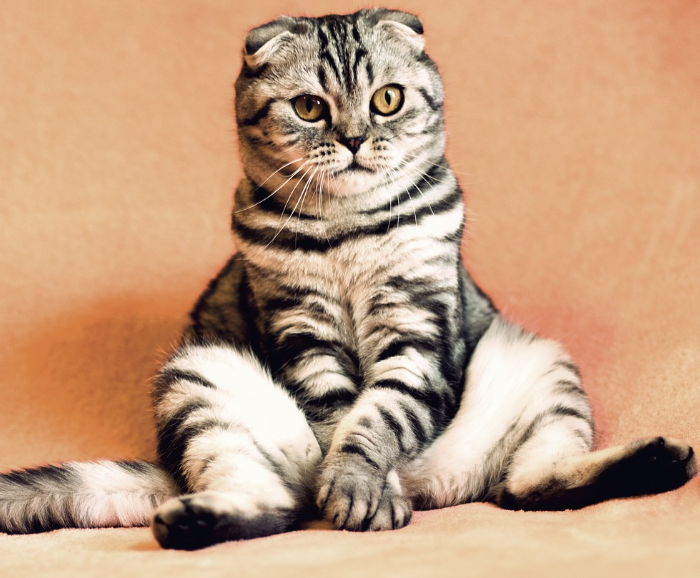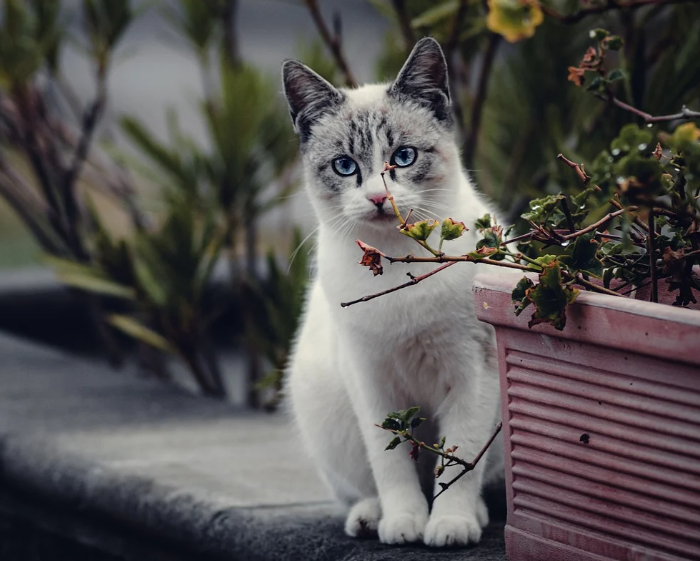2024-04-29
The love that cat parents have for their fur babies is so touching! Despite all the perplexing behaviors that felines might exhibit and the boundaries they occasionally set, we accept them and cherish them the way they are!
Loving our paw friends and appreciating their unique personalities are sometimes accompanied by feelings of disconcertion and even frustration. There are certain habits and types of behaviors that cats may display, such as spraying, that frustrate their owners.
When our paw friends show behaviors we do not like, it is important to figure out the cause of them first to be able to address them properly. This approach helps us understand our felines better and maintain our strong bond with them.

A common cause of this behavior is establishing and maintaining territory.
In the wild, cats use scent as a way to communicate with other cats, signal their presence, and also set boundaries. Although cats are considered domesticated, based on the most recent studies, they are semi-domesticated. They have persevered with their strong evolutionary-based instincts.
Having said that, through spraying, our feline friends assert dominance and/or mark their territory when they feel threatened by other animals. For instance, your cat might spray if you bring home a new pet, especially another cat, or if a cat from the neighborhood is roaming around. By spraying, your feline will likely mark their territory and set clear boundaries to other animals.
Spraying is a common behavior in cats that have not been spayed or neutered. They exhibit this behavior to attract mates.
If you live in a house, then spraying is not likely to be perceived as a problem, in contrast to cat owners who live in apartments. Spraying to attract mates is usually related to a strong, unpleasant smell, that can hardly be removed entirely.
Once your cat reaches sexual maturity, which usually happens around 6 months of age, they may start looking for mates. Spraying is very likely to occur as a behavior.
As mentioned above, cats (as well as dogs) communicate through scent. Similar to expressing their territorial instincts, spraying can be used as a communication tool, asserting a cat’s presence.
Cats are creatures of habit and thrive on routine. Changes in their surroundings, especially abrupt and extreme ones, can cause them to spray as a coping mechanism with stress and reassert control over their environment.
Sometimes it is the big changes that might trigger this behavior, i.e. moving to a new home, or having a family member pass away or leave; while other times it can be the smaller changes that cause stress, such as rearranging, switching to new food, relocating the food and water bowl, etc.
In case, your cat is stressed/anxious, there might be additional signs like excessive grooming, eliminating outside the litter box, decreased appetite, and fatigue. Also, you may notice that your kitty becomes agitated more easily or tends to seek a dark place to hide, e.g. under a bed.
Cats are not dogs, but this does not mean they should not be exercised or mentally stimulated.
Many behavioral issues including spraying are likely to occur due to a lack of sufficient physical and mental stimulation.
While behavioral reasons are typically behind cat spraying, it is essential to rule out any potential medical issues.
Urinary tract infections, bladder stones, or other health issues can cause discomfort and inappropriate urination, which may be perceived as spraying. Consulting with a veterinarian is necessary to ensure that there are no underlying health conditions that likely contribute to this behavior.
Furthermore, you should regularly bring your cat for veterinary check-ups based on their age and lifestyle. Annual examination and parasite control should never be neglected as well.

Spaying/neutering your cat is one of the most effective ways to address spraying as an unwanted behavior.
This will not only prevent them from mating and giving birth to a litter that will become your responsibility but will also reduce the urge to mark territory. Furthermore, spraying/neutering will reduce the risk of many underlying health conditions. For instance, spaying a female cat before her first heat cycle significantly reduces the risk of mammary tumors and eliminates the possibility of uterine infections or pyometra. Neutering male cats, on the other hand, can lower the risk of testicular cancer.
Additionally, spaying/neutering will likely decrease the urge to roam, which can reduce the risk of injuries and exposure to diseases.
If you opt for spraying/neutering your feline, please consult with a veterinarian about the appropriate timing for the procedure to be done. It has become a standard procedure, however, males typically recover quicker than females (recovery in males usually takes a day or two, compared to around a week for females).
Creating a comfortable and cat-friendly environment for your feline will also help reduce spraying.
Since cats are territorial animals, you might set up a designated area at home for your kitty, where they can play, climb, chase, and scratch. You should encourage your cat to use the designed surfaces as territorial markers.
Scratching posts and interactive toys like puzzle feeders, along with the valuable time you spend with your paw friend, can also serve as tools for physical and mental stimulation. Remaining physically fit is particularly important after spaying, when the likelihood of gaining weight increases.
Making adjustments at home, so that you can provide your cat with a good view through the window from an elevated surface, will make them happy!
A soft, nice bedding where your kitty will feel comfortable will contribute to creating a cozy and cat-friendly area at home. Of course, some cats prefer to sleep in random boxes instead of nice bedding. This is something you should be prepared for.
If your cat shows unwanted behaviors because of stimuli in the environment, you should try identifying and removing them.
In some cases, you may simply need to make the changes gradually, so that your cat has time to adjust, i.e. switching their food step-by-step, rearranging furniture gradually, not abruptly changing their daily routine, etc. In other cases, the period of adaptation may take a bit longer, i.e. if you are welcoming a baby or a new pet and have to introduce them slowly.
If your cat is sensitive to noise, creating a quiet zone for them with soft bedding can offer a retreat. Additionally, gradual introductions of new elements, such as scents or sounds associated with changes, can help your kitty get accustomed, without feeling stressed.
Pheromone diffusers, that mimic natural feline pheromones, will help create a comfortable environment and reduce the likelihood of spraying.
In case, you have decided to bring home a second cat, make sure there won’t be adversity for resources. Providing each feline with their food and water bowls, litter boxes, toys, and bedding will help avoid potential conflicts. Give them time to get accustomed to each other’s scent, thus presence first, and do not hesitate to use baby gates or divided areas in the beginning if needed.
There are also situations related to the absence of a beloved human. Despite the common belief that cats do not attach to humans the same way dogs do, they still develop strong bonds and may suffer from the absence of their owner.
If this is the cause of some unwanted behaviors, including spraying, you should be patient. Try sticking to a routine, as it brings a feeling of safety, and make sure to enrich their environment.
Another tip that can be particularly helpful in this case, is leaving behind items with the scent of the absent human that will provide a sense of familiarity and comfort.
Use positive reinforcement techniques to encourage desired behaviors, like rewarding the cat with treats or praise when they exhibit appropriate behavior, such as using the litter box instead of spraying.